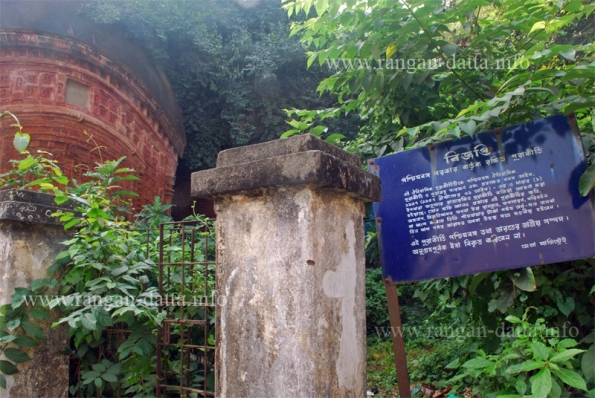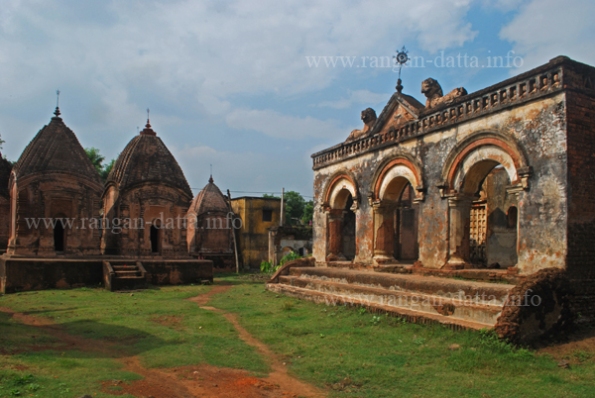Archive
Pathra, rebirth of the temple town
Pathra
Rebirth of the temple town
Also see: Weekend Family tour of West Midnapore
West Bengal is nothing unknown to temple villages and towns. Towns like Bishnupur and Ambika Kalna are well known temple towns in the state. Pathra, a nondescript village near Midnapore town, is another temple village of the state.

Kalachand Temple Complex
But Pathra is different and what makes Pathra unique is the conservation effort of a single man named Yashin Pathan. Yashin Pathan, now aged almost 70 is a Muslim resident of the Pathra. He took up the mammoth task of protecting the 18th century temples way back in 1970.
Sat Deul, Towering Brick Temple, Memari, Burdwan District, West Bengal
Sat Deul, Towering Brick Temple
Memari, Burdwan District, West Bengal
Stone has always been in short supply in the vast flood plains of Bengal. Hence the architects had to restore to other substitute. As clay was easily available the burnt clay bricks soon became a good substitute of stone.

Sat Deul, near Memari, Burdwan District
This gave rise to a new form of temple architecture and lead to the construction of elaborately decorated terracotta temples. Terracotta literally means baked earth in Italian but West Bengal has the distinction of housing some of the finest terracotta art in the world.
Sayed Jamaluddin Mosque, Adi Saptagram
Sayed Jamaluddin Mosque
Adi Saptagram, Hooghly District
Adi Saptagram (literally meaning ancient seven villages) is a station on the Howrah – Burdwan Main Line and is the located just beyond Bandel. According to legend the seven sons of the King of Kannuj left their royal life and travelled all the way to Tribeni in Bengal.
At Tribeni the river Bhagirati, a distributary of Ganga, distributes into three parts the central is Bhagarati (often refereed to as Ganga). The one on the west is Saraswati and one on the east us Jamuna.
Hanseswari Temple and Ananta Basudev Temple, Bansberia, Hooghly
Hanseswari Temple and Ananta Basudev Temple
Bansberia, Hooghly
The history of Bansberia dates back to the days of Shah Jahan. In 1656, the Mughal emperor appointed Raghab Dattaroy of Patuli as the zamindar of an area that includes the present-day Bansberia. Legend has it that Raghab’s son Rameshwar cleared a bamboo grove to build a fort, inspiring the name Bansberia.
Bansberia was also one of the important villages of the Saptagram (a unit of seven villages), an important port town in medieval Bengal. Its importance in pre-Muslim Bengal was religious, owing to its location at the Tribeni or confluence of three rivers.
Bishnupur, Temple Town
Bishnupur
Temple Town
Stone has always been in short supply in the vast flood plains of Bengal. Hence the architects had to restore to other substitute. As clay was easily available the burnt clay bricks soon became a good substitute of stone. This gave rise to a new form of temple architecture and lead to the construction of elaborately decorated terracotta temples.
Terracotta literally means baked earth in Italian but West Bengal has the distinction of housing some of the finest terracotta art in the world. The terracotta art reached its pinnacle under the patronage of the Malla Kings of Bishnupur during the seventeenth century.
Maluti, Rebirth of a Temple Town
Maluti
Rebirth of a Temple Town
Located in the Dumka District of Jharkhand the non descriptive village of Maluti houses several temple with intricate art work.


















